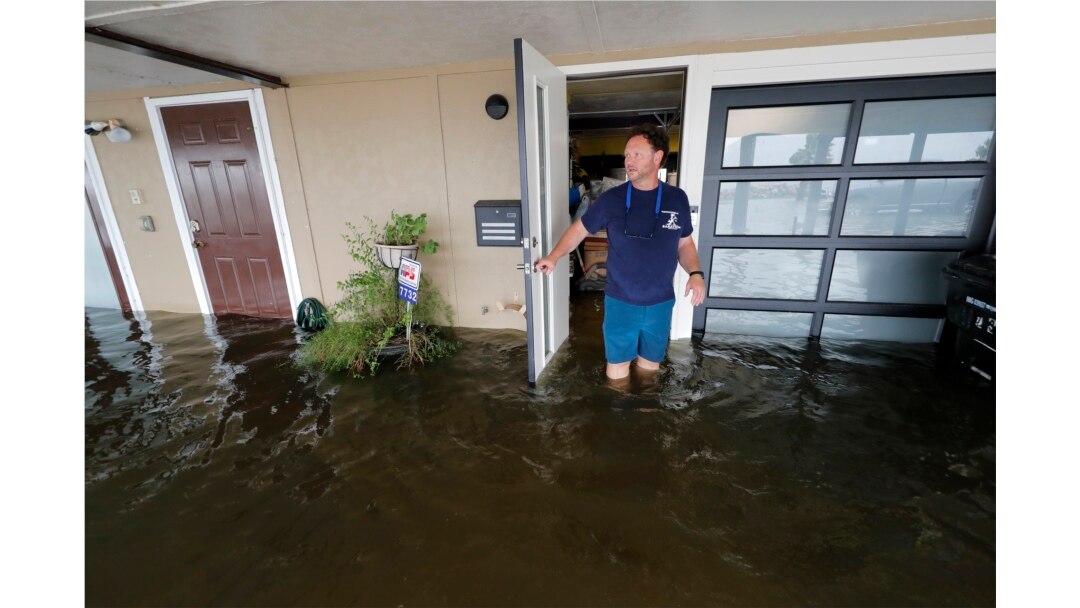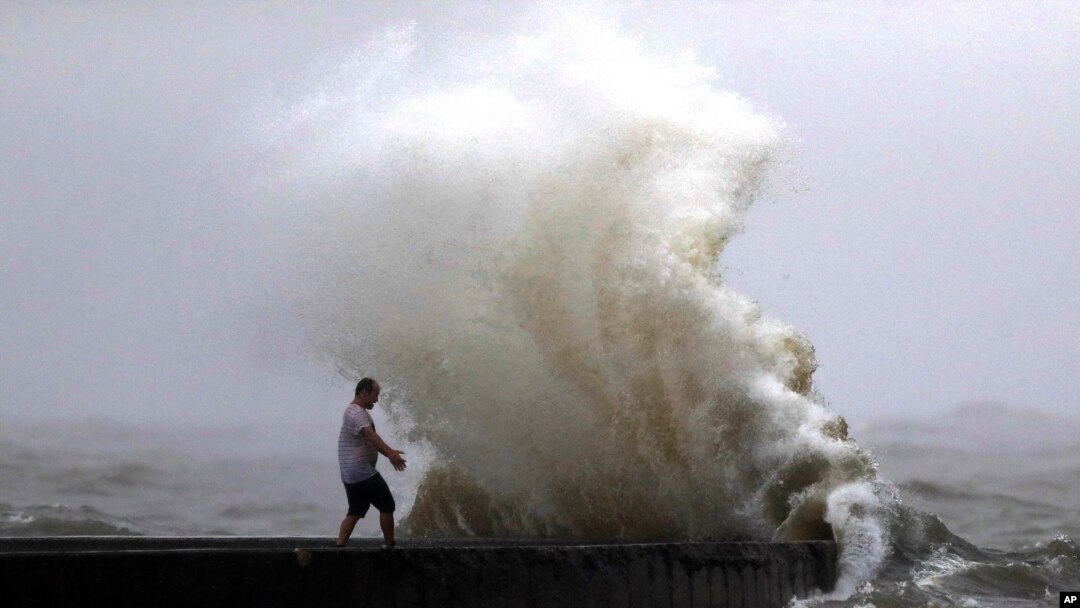Tropical Storm Cristobal weakened into a depression early Monday after inundating coastal Louisiana and ginning up dangerous weather along most of the U.S. Gulf Coast, sending waves crashing over Mississippi beaches, swamping parts of an Alabama island town and spawning a tornado in Florida.
Heavy rainfall and a storm surge continued posing a threat across a wide area of the coast after Cristobal made landfall Sunday afternoon with 85-kph winds between the mouth of the Mississippi River and the since-evacuated barrier island resort community of Grand Isle.
At 5 a.m. EDT Monday, the storm was centered about 65 kilometers north of Baton Rouge, Louisiana, with top winds of 55 kmh, and moving north-northwest at 17 kmh. Cristobal's remnants could be a rainmaker for days. Its forecast path takes it into Arkansas and Missouri by Tuesday, then through Illinois and Wisconsin to the Great Lakes.
“It's very efficient, very tropical rainfall,” National Hurricane Center Director Ken Graham said in a Facebook video. “It rains a whole bunch real quick.”
Forecasters said up to 30 centimeters of rain could fall in some areas. The weather service warned that the rain would contribute to rivers flooding on the central Gulf Coast and up into the Mississippi Valley, posing a new test of the beleaguered pumping system designed to drain flood waters from the streets of New Orleans.
Coastal Mississippi news outlets reported stalled cars and trucks as flood waters inundated beaches and crashed over highways. On the City of Biloxi Facebook page, officials said emergency workers helped dozens of motorists through flood waters, mostly on U.S. 90 running along the coast.
In Alabama, the bridge linking the mainland to Dauphin Island was closed much of Sunday. Police and state transportation department vehicles led convoys of motorists to and from the island when breaks in the weather permitted.

Rudy Horvath walks out of his home, a boathouse in the West End section of New Orleans, as it takes on water a from storm surge in Lake Pontchartrain in advance of Tropical Storm Cristobal, June 7, 2020.
Rising water on Lake Pontchartrain near New Orleans pushed about two feet of water into the first floor of Rudy Horvath's residence — a boathouse that sits on pilings over the brackish lake. Horvath said he and his family have lived there a year and have learned to take the occasional flood in stride. They've put tables on the lower floor to stack belongings above the high water.
“We thought it would be pretty cool to live out here, and it has been,” Horvath said. “The sunsets are great.”
Elsewhere in south Louisiana, water covered the only road to Grand Isle and low-lying parts of Plaquemines Parish at the state's southeastern tip. “You can't go down there by car,” shrimper Acy Cooper said Sunday of one marina in the area. “You have to go by boat.”
In Florida, a tornado — the second in two days in the state as the storm approached - uprooted trees and downed power lines Sunday afternoon south of Lake City near Interstate 75, the weather service and authorities said. There were no reports of injuries. The storm also forced a waterlogged stretch of Interstate 10 in north Florida to close for a time Sunday.
Charles Marsala, who lives in the Orleans Marina in the West End section of New Orleans, films a rising storm surge from Lake Pontchartrain, in advance of Tropical Storm Cristobal, June 7, 2020.
Rain fell intermittently in New Orleans famed French Quarter on Sunday afternoon, but the streets were nearly deserted, with many businesses already boarded up due to the coronavirus. Daniel Priestman said people may be “overwhelmed” by the coronavirus and recent police violence and protests. They seemed “resigned to whatever happens - happens,” he said.
At one New Orleans intersection, a handmade “Black Lives Matter” sign, wired to a lamp post, rattled in a stiff wind as the crew of a massive vacuum truck worked to unclog a storm drain.
The Sewerage & Water Board of New Orleans said the city's aging street drainage system had limits, so residents should avoid underpasses and low-lying areas prone to inevitable street flooding.
Jefferson Parish, a suburb of New Orleans, called for voluntary evacuations Saturday of some low-lying communities because of threatened storm surge, high tides and heavy rain.
President Donald Trump agreed to issue an emergency declaration for Louisiana, officials said.


